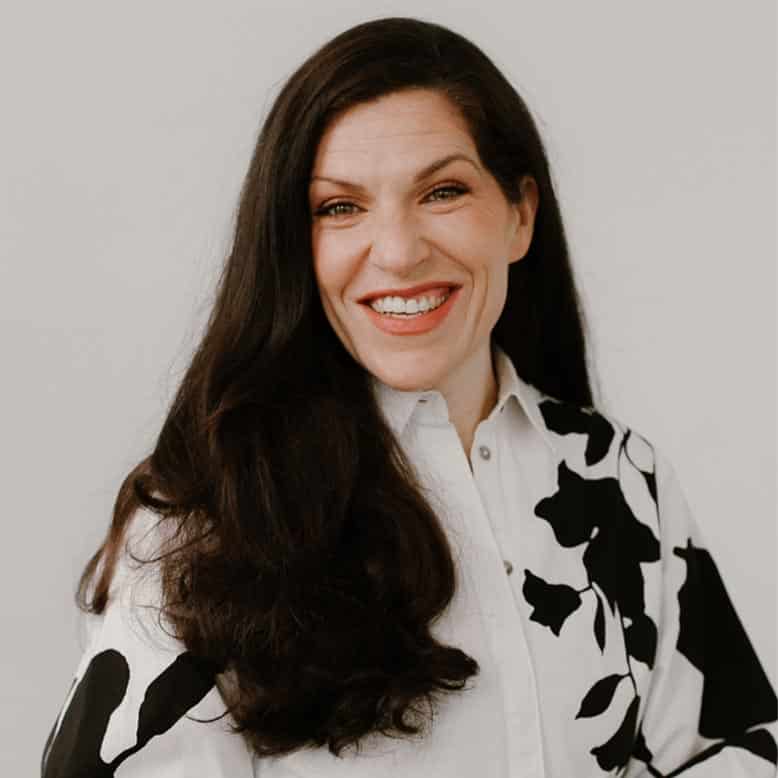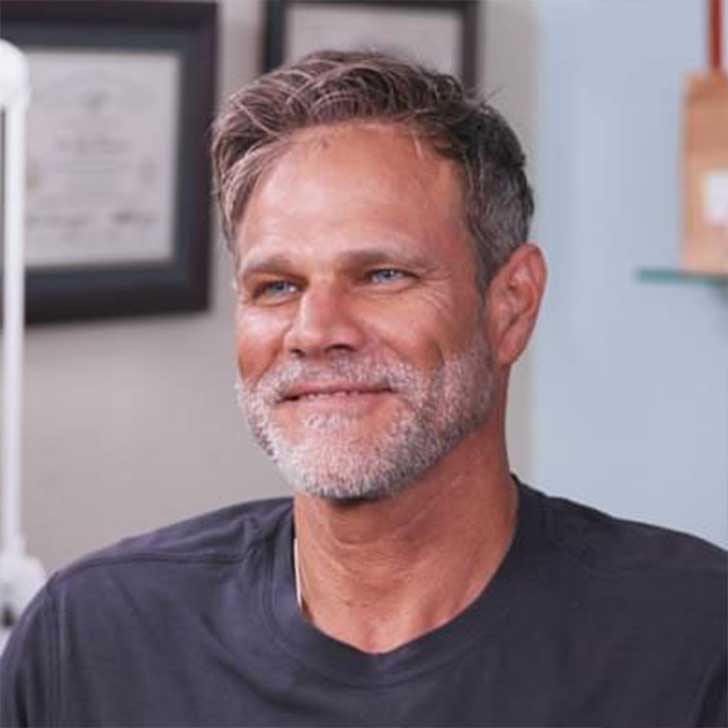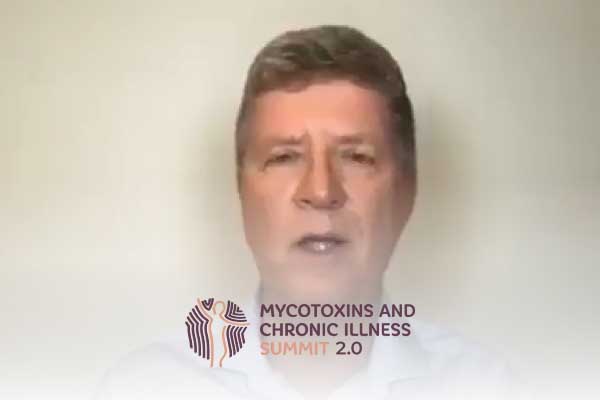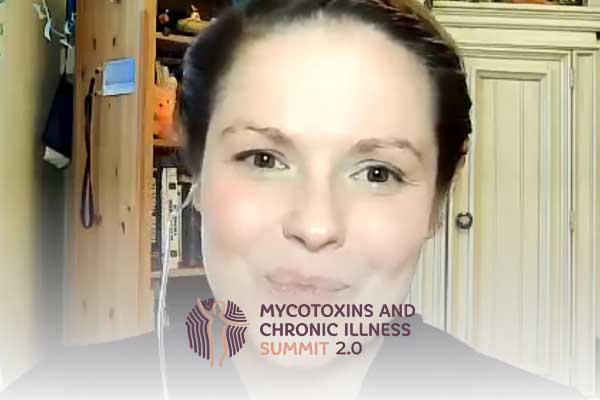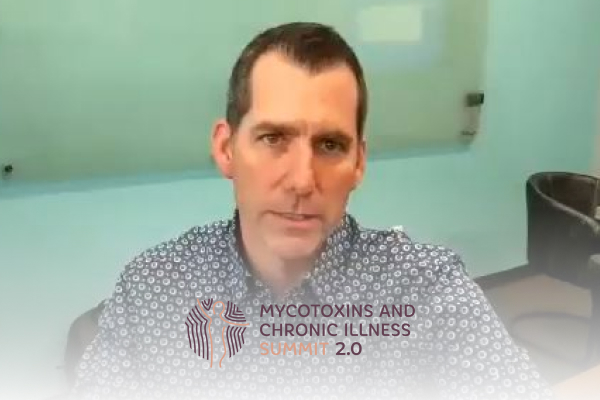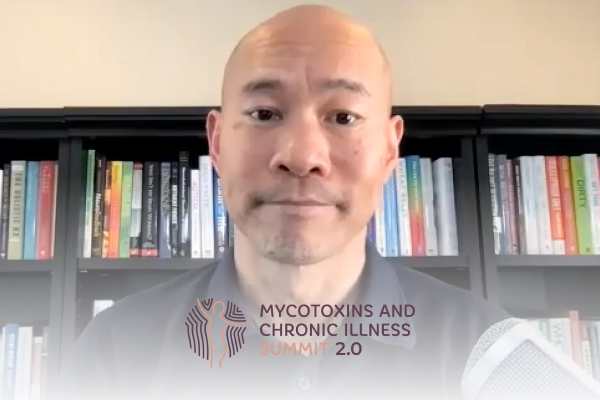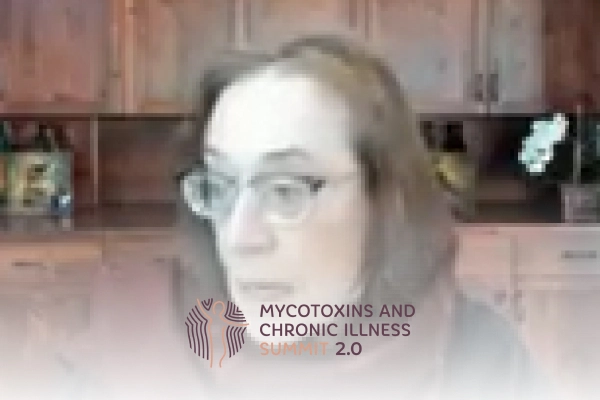Join the discussion below
- High dose melatonin for detox & sleep
- Understanding Methylene blue and its benefits
- Understanding NAD and its benefits
Christine Schaffner, N.D.
Welcome everyone to the mycotoxin and chronic illness summit. I’m Dr. Christine Schaffner and today my guest is Dr. John Lieurance and we’re gonna be talking about innovative solutions and therapies for people who are struggling with mycotoxin and chronic illness, so welcome Dr. Lieurance. It’s really such a pleasure to get to interview you again.
John Lieurance, DC
Yes, well, thank you very much. I appreciate that. I’m happy to be here.
Christine Schaffner, N.D.
Yeah, well great. Well, I know like many doctors out there, you had a personal journey and story, and I just wanna share that a bit, just so people really understand that the things that you’re gonna to be sharing and the knowledge that you’re coming from is from like a really deep understanding within your own body ’cause I think when people are out there in this community they’re really looking for hope and they’ve been struggling for so long. So I’d love for people to see, obviously look at you now and the life you’re leading you really did recover from this. So if you don’t mind sharing a little bit about that.
John Lieurance, DC
Yeah, I would’ve probably not believed at many times during that process that I would ever, but it’s possible. When you’re in the middle of it, you’re sick and you don’t really know what’s wrong with you. And you’re bouncing from doctor to doctor and nobody really seems to have any solid answers and everything you try seems to either help temporarily or it doesn’t help at all. It can be really frustrating and it’s a dark hole, and I went through it for many, many, many years. It was well over 10 years that I had just, just the suffering was unimaginable. And finally actually uncovering the cause.
And then coming to the point where I am right now, looking back on it, it all seems to make a lot more sense because I did go in so many different directions. And so the understanding of not just this disease, which we can call biotoxin illness, some people call it CIRS, chronic inflammatory response syndrome. Some people call it mold illness. A lot of us also tested positive for Lyme. So Lyme seems to either be involved in a lot of cases or happens to be found in conjunction. We don’t know what that’s all about but there is hope. And what I’ve discovered Christine is that, the root cause of all disease is really one thing. And that’s that the body runs out of cellular energy and whether it’s from, whatever it is. I mean, my beliefs is that infection and toxicity are at the root cause of all diseases. And so you could just imagine that with enough pollution and inflammatory byproducts from infection that it’s going to literally make a big shift in the way that we make energy at a cellular level where things just shut down.
So since the body is a self-healing, self-regulating machine and has the wisdom to heal itself, it just doesn’t for what reason. And that’s because it just runs out of gas, it runs out of battery power to do its job. And so what we’re finding is that by replenishing those deep cellular functions and reducing the inflammatory headwind, that your energy production encounters, ’cause all stresses lead to one thing and that’s inflammation and that inflammation is what makes that shift in energy. And that shift in energy, then doesn’t allow the body to do the job that it needs to do, like to detox the body. So we start accumulating more toxins. And that becomes a real issue with mold as you know.
Christine Schaffner, N.D.
Yeah, no, that’s such a great point and I’m so glad that you can be a story of hope out there for people who are listening and I’m so glad you’re seeing things from this perspective because as we talk about solutions and strategies I’ve had this conversation, this thought over the years is like in the chronic illness world, everyone’s fatigued, everyone has low energy and we have approached it in the past with okay, their buckets full, they’re toxic that all of the down streams effect of that on the immune system, all of these microbes that are in balance and just like let’s chip away at that and then energy gets restored, but with a lot of the solutions and tools in your mindset, and I think the change of conversation that’s happening more and more is like, okay, how do we bring cellular energy to the forefront of a protocol. So then the body can actually regulate and to heal and do the work to clean up the body. So is that your perspective at this point? Or what is life in your patients and what have they taught you from that perspective?
John Lieurance, DC
Well, what I find clinically and what I found for myself is that I had to approach this both systematically, but also I had to look at various systems. Before we started recording, we were talking about the importance of the sinuses and the nasal passage. And I think a lot of people have a lot of inflammation that is caused by things growing in their nasal passage. We have this infection that we test all of our biotoxin patients. Actually, I test all of my patients, it’s called MARCoNS. And we want to try to get rid of this early on so that people respond to our other treatment. So if you’re listening to this you might wanna look at getting yourself tested for MARCoNS it’s a nasal swab, and basically what it is, it’s this antibiotic resistant strain of bacteria that produces a lot of biofilm.
So biofilm is like the sticky fly papery type of material. And so if you could imagine, if you have a lot of that in your nasal passage, when you’re breathing, what’s in the air is gonna stick to the mucosa and then it’s gonna be carried into your bloodstream. And then it could also be carried straight into your brain from there and also into your gut. And so you could have a bad gut all the time, just because your sinuses are creating that situation and the same thing for the brain. So what we do is, we have a couple of different approaches, but my personal protocol is we’re using a product that we formulate and produce at mitozen.com and it’s called glutostat and it’s one product. So it makes it real easy.
We do have some other products that other clinicians use the MARCoNS A and the MARCoNS B nasal sprays, but we’ve really found that just the one really does the trick. And so this glutostat nasal spray has emulsified sage oregano, clove, has NAC, has glutathione. It has some terpenes that are very nice and antimicrobial and it has colloidal silver. So it really has everything that you need in there. And so, we spray two sprays each side, four times a day. And in the morning, we like people to irrigate with a Neti pot, and you can actually put some of this Glutostat into the Neti pot water. You can even put a little bit of iodine if you’re wanting to be a little bit more aggressive and the Neti pot’s done in the morning and in the afternoon, so that protocol’s done for 30 days. And the vast majority of the cases that we put through that are negative for MARCoNS after we test them.
Christine Schaffner, N.D.
Awesome, that’s great. That’s a really great practical solution. And when you do the MARCoNS testing, are you also checking the boxes for fungal overgrowth and looking at biofilm or it doesn’t matter if MARCoNS positive, you just proceed as you said?
John Lieurance, DC
Yeah. It’s gonna be the same treatment, no matter what.
Christine Schaffner, N.D.
Yeah, sometimes people’s curiosity, but in bio-regulatory medicine, right. We talk about these interference fields and chronic infections that just really drain the body’s energy and all these reservoirs, as you mentioned. And so I find the sinuses are huge in that. And so, really great tip and then we were chatting too. You wrote another book, this is potentially, it sounds like your third book and it’s around cranial technique that you call functional cranial release. And that’s really looking at structurally ’cause I don’t know about you John, but I know there’s so many factors but some of our patients come to us and have had repetitive sinus surgeries or trauma to the actual anatomy of the sinuses. And how does that impact recovering the sinus health as well?
John Lieurance, DC
Yeah. Great question. So, I always say you’re either a swamp or a river. And so if you are.
Christine Schaffner, N.D.
I’ll start using that.
John Lieurance, DC
If things aren’t draining properly, then it favors microbial overgrowth. And so what happens in the sinuses is that because, really it kind of goes back to Weston Price. Weston Price is considered the father of the raw food movement. And what he did is he traveled all around the world and he was able to see that civilized and industrialized people develop these collapsing faces. And we think about how we need to have wisdom teeth removed and that wasn’t the case 100 plus years ago. So something’s going on in civilized culture, there’s stresses with food and other stresses that lead itself to us mouth breathing, not breathing through our nose. And that’s really what happens when we have a lot of inflammation in our body is that oftentimes we can have challenges breathing through our nose.
And so when we start breathing through our mouth, our tongue drop back and it causes interfere to the breathing that way. And then there’s a lot of consequences, negative consequences to mouth breathing that include the facial structures basically collapsing in and basically everything just gets tight. And so this creates poor drainage and you get more of a swampy situation. So what we do is we take balloons and the balloons are placed in strategic areas based on balance testing that’s done with the functional cranial release or the FCR, and people can get more information about this if they go to functionalcranialrelease.com and you can see videos of me performing this. We do it a lot with people with chronic sinus issues, chronic sleep apnea, any type of issues with the head, chronic headaches, TMJ. I do treat a lot of neurologic cases with balance and dizziness and movement disorders. Parkinson’s, Alzheimer’s, degenerative neurologic disorders. I mean, there’s a lot of things that I treat using this, this endonasal balloon treatment but for sure, if it’s a challenging situation with the nasal passage, difficult breathing, this treatment tends to do the trick.
Christine Schaffner, N.D.
You know, I have never experienced it myself, but I’ve seen it done a few times and explain like, would you say it’s intense or like the way that you do it, do you feel like it’s pretty quick? And most people don’t even know what happened, ’cause it’s so quick. I mean, just from a patient perspective, what should they anticipate?
John Lieurance, DC
Well, some people it’s more pressure than pain. I think pain is a personal private experience. So the interpretation of pain, it could be pressure, but it’s just, we’re wiring and we’re filtering for something else. But most of the time when I’ve treated patients that have had this type of work from another clinician that does it, we’ll say that the technique is much more gentle. We start out with lighter pressure. But for those people that are really jammed, when you expand that cavity with the balloon, it can be quite a release. You literally can hear and feel things move and people are so excited. They get so excited about the fact that they can feel that change and they feel better and they wake up more refreshed and they’re breathing better. So it’s one of those things that you can really get that just immediate satisfaction from like a treatment.
Christine Schaffner, N.D.
And do you feel like one is usually enough or I guess depending on the person, but I’m just thinking of someone wanted to fly in to come see you. I mean, do you get it done in like one or two days or? Just the anticipation of planning for that.
John Lieurance, DC
Yeah, so when people fly in, we usually will do it all in one week. So we’ll usually do four or five treatments back to back. People that are here for longer periods of time, we might stretch them out local people for instance, or if people are doing longer protocols, we may only do twice a week.
Christine Schaffner, N.D.
Awesome and I imagine of course it not only helps to, create a river rather than the swamp in the sinuses, but also I’m like imagining the anatomy and probably a positive effect potentially also on the pituitary. ‘Cause I know a lot of our patients have a lot of pituitary dysfunction for a myriad of reasons, but do you see that as well?
John Lieurance, DC
Well, and the pineal as well. So think about this, you have this cerebral spinal fluid and the cerebral spinal fluid is being circulated every 12 hours. It totally goes around the central nervous system and it’s a pumping action of the skull. And if you look at skull and all the different sutures, they move in a specific pattern to facilitate this movement that’s called cranial sacral motion. And so what happens is these things get stuck. And so you don’t have that motion that’s pumping that cerebral spinal fluid, but you also don’t build up that pressure that’s necessary because the pressure of the cerebral spinal fluid is actually the trigger of the cells within an area called the choroid plexus.
The choroid plexus are within the ventricles. And it’s the pressure that stimulates these choroid plexus to produce cerebral spinal fluid to begin with. So oftentimes, people don’t have enough cerebral spinal fluid. And so there’s not enough pressure, they’re not producing enough. And so they’re not able to circulate these nutrients around the brain and spinal cord. And that pressure also goes and terminates at the third ventricle. And you’ve got the pineal at the very end of that, which when it’s moved and you have pressure with it, helps to really activate it and help it do some pretty magical things.
So the pituitary gland is also a gland that requires motion. All of these structures in the brain when you move things you have something called the lymphatic system, which is this gutter system that flushes the brain of toxins. Some of the things that we can do to enhance lymphatics are you initially talked about high dose melatonin, which I wrote a book about. We can get into that ’cause it’s deep sleep. Deep sleep is the thing that really kicks in the lymphatic system, sleeping on your side actually tends to favor the lymphatic system a little bit better. And then also doing things to improve the motion of the cranium can improve the lymphatic system.
Christine Schaffner, N.D.
I’m so glad you brought that up. And so, here we are addressing the sinuses doing this technique. Do you train physicians if people can find people in their area or is there any way to for people who are thinking like I need to go do this? Obviously come see you. I want them to go to your clinic, but if they’re somewhere else where should they look to fins someone who’s skilled in this technique?
John Lieurance, DC
Yeah, good question. So they can go to functional cranial release and reach out to me. And I have trained a few doctors, but it’s been a few years since I had a course, I’ve been kind of sidetracked doing other things, but I plan on starting to train again soon. Probably in correlation with releasing this book. But right now I would say it would just be a one-on-one referral if there’s anybody in their area that I knew about.
Christine Schaffner, N.D.
Great, great, well I’m grateful you’re teaching more people and spreading this information. And then obviously, the sinuses, this technique, has a profound effect on the brain. And we talked already about the pineal gland and melatonin is becoming more and more popular, especially in the realm that you’re talking about it and the doses that you’ve been a proponent of, but walk us through why any patient with a chronic illness, should consider melatonin in their treatment plan.
John Lieurance, DC
Well, so if we think about making energy, right? So we had talked earlier about how cellular energetics might be at the core of all diseases and fixing it might be the solution to recovering from all diseases, especially biotoxin illness or mold, whatever you wanna call it. So where the rubber meets the road inside of the mitochondria is where oxygen and glucose are utilized in something called the electron transport chain. So if you can think within that mitochondria its job is to move electrons. In the process of moving electrons it’s considered an exothermic response. In other words, you produce heat with this process. And so the body uses that heat to make energy, which is ATP.
Now within that mitochondria, there’s four particular proteins that kind of carry this on in their complexes that are named one, two, three and four. And we’ll get into that a little bit later when we talk about Methylene blue, but you can imagine then when you’re making energy in the mitochondria and you’re producing heat, and you’re trying to convert that into ATP, there’s gonna be some smoke, right? There’s gonna be some byproduct of making that energy. We call that oxidation. And so that oxidation is quenched by melatonin in every cell in the body that’s the primary antioxidant that buffers, this rubber meeting the road in the mitochondria. And so we run out of that as we get older it’s just the consequence of aging. So we either look at having that decline in health and increase in disease and susceptibility disease, or we can supplement with melatonin.
And so supplementing with melatonin is I think something that makes a lot of sense for people over the age of 40. And so yes, I think it’s important for people to look at sleep hygiene. We wanna look at the circadian rhythm. This is a very important sleep wake type of thing, where there’s a lot of signaling that allow us to deeply rest, which is gonna correlate to the parasympathetic nervous system. And so this resting, and then this wake cycle is more with cortisol and the cortisol is gonna keep us alert. It’s gonna help us to hunt, find food, get things done during the day. And so, melatonin is primarily the one driving the parasympathetic resting phase of sleep. And so when we start to suffer from declines in melatonin, we start to have a lot of problems with our ability to buffer stress from the parasympathetic nervous system and where that shows up Christina is in the heart rate variability.
So we can also look at heart rate variability with people and see that as we start to get older heart rate variability starts to decline pretty rapidly just like melatonin and the graphs almost look the same. And so I would all offer that it’s, melatonins support of the parasympathetic nervous system that’s really dictating that all important heart rate variability and that by supplementing with melatonin, oftentimes we can see some dramatic improvements in heart rate variability. And then as per all of the research, we see some incredible improvements in health and longevity based on that number.
Christine Schaffner, N.D.
I love that. I mean, there’s so many angles to look at the role melatonin plays, and I always feel like a new one. So that’s a really great angle to think about. And, I know that we both have connected in looking at heart rate variability, also in this idea of heart coherence and heart brain coherence. And so can you talk a little bit about what your perspective of that and the healing process, as you know, melatonins helping to increase variability, increase coherent heart rhythm, and what your perspective is there?
John Lieurance, DC
Well, anytime you’re really looking at vitality, there’s a need for energy to fuel that, right? So when we’re starting to talk about the coherence, that connection between the brain and the heart and the ideas that maybe the hearts really the brain, and the tissue in the heart actually looks very similar to brain tissue, and there’s been documentations of people losing quite a bit of brain matter and being able to function. And whether, a lot of our thoughts might be coming from the heart itself. So, this is a really interesting subject, and it’s something that I love to talk about. And when you start getting into that, you start to really reflect on some of the spiritual ideas that we have as far as coming from a loving place. And contribution and coming from our heart and leading from our heart. According to the heart math institute knows what’s gonna happen before it does.
They’ve done studies where they’ve actually like flashed pictures and the heart literally responds up to 20 something seconds before the picture changes. And so they’re actually thinking the heart transcends time and space. So there’s a wisdom that runs through the heart that I would offer as a universal wisdom. And this is one of the reasons I love melatonin, and I love looking at the pineal, and I love how melatonin converts into some other really important chemicals and compounds and molecules that might allow us to be more in touch with this other dimension, this other aspect of healing, where we’re getting this coherent effect through the heart, and we’re seeing these instantaneous healings.
So, in Joe Dispenza, last, I took a deep dive into some of his work last year and found that there was a lot of similarities between what he’s doing and what we’re doing. And what I love is that there’s this instantaneous healings that happen with people. And then there’s the healings that happen two or three months after they might do some of these coherence healings with the people there at the event. And so what I’ve concluded is that it’s the microbiome that is more adaptable. And the microbiome is the ones secreting all of these, all this information in the form of exosomes, which are these tiny little vesicles that circulate through your body.
And they they’re able to create a healing response in the body where our own cells and tissues not being as adaptable as our microbiome might respond similar to how as if we injected like today, we had two cases that we did bone marrow with. A big part of our practices, regenerative orthopedics. And we do a lot of work with bone marrow and exosomes and platelet rich plasma. And we use high definition ultrasound and place these cells, in rotator cuffs, in hips, in labrums, in meniscus and all kinds of things. And so when we do these injections, we’ll usually tell the patient it’s gonna be two to four months before the healing really happens.
I mean, you can’t expect to go and plant a garden and just immediately have tomatoes growing. I mean, it takes time to grow. And so when you get into regenerative medicine, that can be the way it works, if it’s the human cells. And so I think it’s really interesting. It’s an interesting subject and I think that we could start diving into the microbiome as far as how important it might be, especially for the early, quick responding healing sessions and what is more important than melatonin for a strong microbiome. I really don’t know. And we can dive into that a little bit if you’d like.
Christine Schaffner, N.D.
Yeah, yeah, yeah, please.
John Lieurance, DC
Oh, okay. So your microbiome is on our circadian rhythm, just like we are. And so what happens is they have a rest and then they have more of an active time. And so at night, when melatonin’s high, your microbiome goes into, what’s called a swarming effect where they actually regenerate. And so there’s 400 times more melatonin that’s released in the gut than in the brain. And so there’s this huge importance for not just a little bit of melatonin, but a lot for a healthy gut. And so when I wrote the book melatonin miracle molecule, we broke it into chapters based on different diseases or organ systems. Like what we’re talking about now would be gut. And there’s so much research that shows the benefit of melatonin supplementation to Crohn’s disease and ulcerative colitis and ulcers and really any digestive condition you can think of. There’s been some research that shows that there’s benefit to the use of melatonin.
Christine Schaffner, N.D.
Yeah, your book is phenomenal. I love referencing it. So thank you for putting that together and again, another use of melatonin that people probably don’t realize, the role in the microbiome and that’s so interesting, John, how you share, like the more fast adaptability is coming from the microbiome rather than the human cells. And yeah, it’s something for me to read on ’cause we have microbiomes in every part of our body. Our brain has a microbiome, our lungs, our skin, all of that So I think that’s gonna be a really exciting place to see the research.
It’s like our consciousness has to tune into our microbes and help them to be more coherent and more with us. So it’s like this whole way of looking at the body, we’re like these stewards. So that’s a real cool perspective to think about. So let’s go into Methylene blue, ’cause you’ve been really innovating around Methylene blue Metozine products. You do a lot of hands on clinical work in your office. So how did you get introduced to Methylene blue and let’s just quickly go through the Methylene blue rabbit hole.
John Lieurance, DC
Yeah, so it’s an industrial dye. Is the audio okay out here?
Christine Schaffner, N.D.
Yeah, it’s great.
John Lieurance, DC
Moved outside to get a little.
Christine Schaffner, N.D.
Yeah, you’re practicing what you preach, right?
John Lieurance, DC
Yeah, well, today’s a Methylene blue loading day for me, so it’s nice to be out here in the sun getting a little UV. But yeah, so methylene blue, it’s an industrial salt and what’s fascinating about methylene blue is it works so powerfully on the mitochondria in a way where it works on all four of those protein complexes that we talked about. And so there hasn’t been a complex that they’ve ever, or a compound that they found that works so amazingly on all of those complexes. One of the complexes that it works on pretty well, but not like as well as the other ones is the fourth one, which is called cytochrome C oxidase.
And so that cytochrome C protein is also the area that light works on ’cause cyto and chrome meaning light cell, light. So when you combine the Methylene blue with light, it’s just amazing. It just turns on the mitochondria, like nothing that we’ve seen. So what we’ve started using in our clinic is intravenous laser along with IV methylene blue. And besides being incredibly antimicrobial, it also has the ability to really turn on the cellular energy. So then the body can go in and do the work that it needs to do.
Christine Schaffner, N.D.
Awesome. And so walk us through, I guess, if people wanted to explore using Methylene blue at home, and obviously under guidance of their doctor for sure.
John Lieurance, DC
We just had a truck drive by, sorry.
Christine Schaffner, N.D.
Oh yeah, no worries. Just how to integrate this. Like how to think about integrating this in their protocol, like you said, you’re doing a loading dose today, so maybe what does that mean?
John Lieurance, DC
Well, so I’ll pick two or three days a week that I’ll take Methylene blue and I’ll make sure to get in front of the red light and get out in the sun as much as I can. I do this with my patients. So we launched a product called Lume blue. Lumetol Blue, excuse me. And Lumetol Blue is a polyphenol. Right now, we’re kind of in the process of, of trying to make it a little bit better, but it’s a suppository that’s made to take orally. So it’s a 300 milligram suppository and you break it into four pieces. And the pieces, the suppository is basically palm oil. So it’s hard within room temperature. So you can throw it in the back of your throat and drink it down like a tablet and your mouth won’t get all blue. Really, every other oral application you put it in your mouth and your teeth, and your gums turn blue, and you look kind of like Frankenstein a little bit for a while. So we’re trying to avoid that with this and then we have a suppository which is also very effective at slow releasing the methylene blue into the bloodstream over five or more hours.
Christine Schaffner, N.D.
And I’m curious from your perspective. So it sounds like a lifestyle just pulsing methylene blue, just because of modern life and for optimization to after the healing journey. But is there any like kind of timeframe that you guide patients in, like let’s do it every day for three months and then you get into maintenance dose or? Any guidance from your observation of how to work when people are brand new to this?
John Lieurance, DC
Well, yeah, I mean, I’ll have my patients that I’ll dose daily with methylene blue. There’s been some really amazing big clinical trials on depression, challenging depression with methylene blue. And they were dosing people at about 75 milligrams a day for extended periods of time. And there didn’t seem to be any side effects. If you’re on SSRI, it’s for depression, that would be the only thing that you might have some concern because there’s some information online that discusses some possible side effects with combining those together.
Christine Schaffner, N.D.
Yeah, thank you for mentioning that. So then, with getting IV methylene blue, can you just share kind of your thought process of when to add that into a protocol, or it sounds like also from the in person experience that you guide people through the week, it just really turns everything up a notch, but just, yeah. Your observations there.
John Lieurance, DC
Well, a lot of cases that fly in, that travel in with us we’ll treat them with a combination of ozone and methylene blue. So one day we might do Methylene blue the next day we might use ozone and we might see people daily, we might see people five days a week. We might see people less than that, it just depends. People that travel in, usually it’s a daily schedule. People that are local, we can spread it out a little bit longer, but it tends to move the needle pretty well for a lot of the patients that we’ve used it on, maybe more so than anything else we’ve used.
Christine Schaffner, N.D.
Awesome. Yeah. I’ve just started using and referring people for IV Methylene blue and it’s new to me, but yeah, it’s really exciting. And just the more I learn about it, like melatonin, it’s like, how could we ignore this? And then, so John, what color laser light do you use in your office?
John Lieurance, DC
So the Methylene blue is activated by a very specific wavelength and frequency. It’s 660 nanometers. And so that’s the one that we use. And so we also, we have panels that we sell as well. We call them Mito lights. So we have little mini ones that are really phenomenal for traveling and everybody that I’ve turned on to these little mini red lights, it’s like one of the best things they’ve gotten, in a long time. So they’re really neat. So you can start utilizing methylene blue, even on an oral protocol with some of the products Mitozen makes. There’s other companies that sell methylene blue, and then you could get a red light and start using the red light. That’s a pretty simple kind of way to get started. And you could do it daily, or you could do it, you could pulse it and do it a few times a week, but you should really find someone that can help guide you through this. A lot of people, it may not be the best idea to go it alone, find a healthcare practitioner.
Christine Schaffner, N.D.
Yeah, absolutely. I mean, I think it’s great that there’s so much education out there for people to feel empowered by and just get closer to figuring out what they need, but I agree. When you’re in it, you need perspective and someone to help prioritize as well. So John, as we wrap is there anything you wanna share with the audience today about what you’re most inspired about at this moment in the chronic illness community?
John Lieurance, DC
Well, we touched on the melatonin and the methylene blue, and those are the things that really have me excited. We talked about the endonasal balloon releases that can really help unlock the skull and improve brain function and improve sinus health. The importance of doing a sinus protocol like a 30 day sinus protocol, whether you’ve been tested for MARCoNS or not. Everybody really should be tested, whether you test yourself before or after the 30 day protocol, just to make sure that you don’t have it would be the only consideration I would give it.
I think doing a good blood panel for a doctor that’s been trained and qualified with biotoxin and illness, to be able to look at some labs and look at what you’re dealing with. Look at viral titers are really important and inflammatory markers, some hormones I think are really important to look at. We balance hormones, we have a specialist in our office that co-treats them. And so, I think those are all really important. We covered a lot of these as like mitochondrial support binders we didn’t really talk about, but I’m sure you’re covering that extensively in some of your other talks. I think that with all of that in context, if you’ve taken good notes during this interview and you start to kind of rabbit hole and expand on all those subjects that we touched on, I think you’re gonna be really far ahead.
Christine Schaffner, N.D.
Yeah, no, absolutely. I really appreciate you sharing your knowledge and your wisdom and all these great resources. And if people wanna learn more about your product line and your clinic, and even the training that you’re gonna start doing more of, can you just share some of your websites so people can jot those down as well?
John Lieurance, DC
Sure. So the store is mitozen.com, mitozen.com. And then I have an educational site called ultimatecellularreset.com. And then we also have Instagram Dr. Mito at Instagram, and then my clinic website is advancedrejuvenation.us.
Christine Schaffner, N.D.
Great, great, great. Well, we’ll have all of that alongside this interview and thank you so much for the work you’re doing and for your time today.
John Lieurance, DC
Well, you’re welcome, Christine. Thank you.
Christine Schaffner, N.D.
Thank you.



